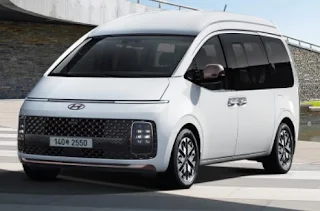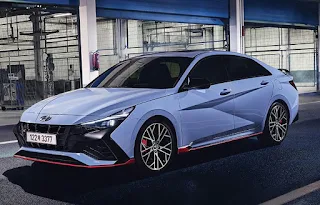Genesis started the year 2020 with their first SUV called the GV80 and now, they're ending the year with their second SUV that targets the likes of the big names like the BMW X3, Audi Q5, or the Mercedes GLC-Class. It's called the GV70 and as forewarned, their newest midsize luxury SUV, combined with its big brother GV80, will generate record sales for the Korean luxury brand. So, let's have our ex and whys about the GV70.
 |
| 2021 Genesis GV70 |
 |
| 2021 Genesis GV70 |
The GV70, priced at 48,800,000 Korean Won (around $49,000), is the second SUV from Genesis and you can think of it as the baby brother of the GV80 that you saw last January but unlike the GV80, this luxury midsize SUV is the most cutting-edge vehicle you can expect from the land of K-dramas, K-pops, and kimchis. Such excitement but don't get too excited just yet because it's time to do some little detective work.
Starting with the design, the GV70 is like a jacked-up version of the G70, the Korean 3-Series rival that recently gained its big minor change a few months ago, judging from its front view that looks like it came from the G70. Although the front view is sharp looking like every Genesis should, the side and the rear view somewhat spoils its attention to detail, giving an impression of a sharp-dressed hunchback bodyguard, metaphorically speaking. Slap it with the Sport Package and it points to the west of weird, which is rather odd for luxury crossover standards but this is how modern-day cars look nowadays.
 |
| 2021 Genesis GV70 interior |
On the interior, the GV70 is minimalist in every way, which means bad news for speedo boys because of almost everything in the dashboard's buttonless. Still, could be worse, because, with all of the technology loaded in it, the GV70 is the first car to come with biometrics for added security and convenience. Yes, we are familiar with the biometric stuff in our smartphones and other stuff but putting biometrics in a car is mind-blowingly nervous for anyone unfamiliar with it. Anyway, enough about the tech stuff because as a five-seater crossover with some ample rear space, comfortable seats, and decent boot space fit for whatever they can throw at it, not to mention the sweet spot, of course, the GV70 is a multipurpose luxury crossover that works wonders at any time.
 |
| 2021 Genesis GV70 |
Under the hood, the GV70 offers a choice of engines ranging from the 2.2L diesel, the 304PS Smartstream G 2.5T engine, and the range-topping 3.5L V6 turbo engine with 380PS of power. All of these engines are mated to an 8-speed automatic. The 2.2L diesel and the 2.5T can be either rear-wheel drive or all-wheel drive but the 3.5T V6 turbo variant is only offered with all-wheel drive.
For a midsize luxury crossover, the GV70 is surprisingly Genesis in every which way it goes because of its enhanced body frame structure, sporty suspension setup, rear-wheel-drive-based platform derived from every Genesis vehicle in the range, brakes, and various driving modes that fit through almost any situation. Aside from that, the four-wheel-drive variant's Multi-Terrain Control really works through tarmac, gravel, and snow, well almost, and the Sport Package's addition of Sport Plus in the driving mode, as well as e-LSD, really shows its flashy side of driving. Put them all together and the GV70 really proves its worth as an all-around performer that deserves to be taken seriously through all walks of life.
Being the most cutting-edge crossover made in South Korea, the GV70 offers the most advanced driving aids such as Highway Driving Assist II, Intelligent Speed Limit Assist, Navigation-based Smart Cruise Control, Forward Collision-Avoidance Assist, Blind-Spot Collision-Avoidance Assist, Driver Attention Warning, and Advanced Rear Occupant Alert, among many others.
Most speedo boys can get easily bothered by the GV70 because 1) it's a crossover, 2) there's a lot of techs that got speedo boys running scared, and 3) minimalist interior. Despite all the weirdness, the GV70 is surprisingly an enjoyable luxury crossover to drive on a daily basis and whether it can be used for family purposes or for VIP work with the clients around you, consider the GV70 your next vehicle to drive. Looking forward to your responses about the GV70.
Available colors: Uyuni White, Seville Silver, Carbon Metal, Viq Black, Cardiff Green, Royal Blue, Mauna Red, Barossa Burgundy (Metallic), Matterhorn White, Melbourne Grey, Brunswick Green, and Barossa Burgundy (Matte)
Photo: Hyundai Motor Company



.jpg)
.jpg)
.jpg)













































